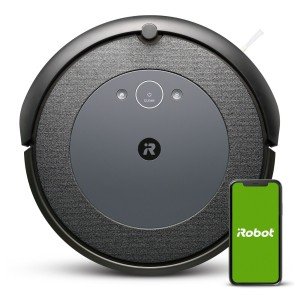The Rise of Robot Vacuum Cleaners in Industrial Settings
In recent years, the landscape of industrial cleaning has actually witnessed a significant change with the intro of robot vacuum cleaners. Robot Vacuum Mops automated gadgets are not just a novelty for homes; they have actually gained traction in storage facilities, producing plants, and other industrial environments. This post explores the functionality, benefits, and factors to consider of robot vacuum within the industrial context, while responding to some regularly asked questions.
What are Robot Vacuum Cleaners?
Robot vacuum cleaners are automated cleaning devices geared up with innovative sensors and innovation that enable them to browse around spaces, detect dirt, and vacuum surface areas without direct human intervention. In industrial settings, they are designed to manage a variety of debris types, facilitate regular cleaning schedules, and improve overall operational efficiency.
Table 1: Key Features of Industrial Robot Vacuum Cleaners
| Feature | Description |
|---|---|
| Navigation | Utilizes LiDAR or camera-based navigation for precise mapping. |
| Size and Design | Compact and robust style to suit tight spaces and stand up to difficult environments. |
| Self-Charging | Instantly returns to its docking station for charging. |
| Dustbin Capacity | Bigger dustbin suited for industrial particles sizes and volumes. |
| Shows | Can be programmed for scheduling and particular cleaning jobs. |
| Information Collecting | Geared up with sensing units to gather data for maintenance and cleaning analysis. |
Benefits of Robot Vacuum Cleaners in Industrial Settings
The adoption of robot vacuum cleaners comes with a myriad of advantages:
Increased Efficiency:
- 24/7 Operation: Unlike human cleaners, robots can operate all the time, contributing to continuous tidiness without downtime.
- Time-Saving: Automated cleaning enables employees to focus on core tasks instead of cleaning responsibilities.
Expense Savings:
- Labor Costs: Maintaining a robot vacuum can reduce the requirement for a large cleaning personnel, reducing total labor expenses.
- Operational Efficiency: With improved cleanliness and decreased downtime due to upkeep issues, organizations can conserve on functional expenses.
Boosted Safety:
- Reduced Risk: By lessening the human involvement in hazardous cleaning environments, the risk of accidents is lessened.
- Constant Cleaning: Robot vacuums ensure that areas are consistently cleaned, lowering slip hazards and unhealthy environments.
Increased Flexibility:
- Customizable Cleaning Routes: These makers can be configured to tidy specific areas or floors, adjusting to altering industrial designs.
- Variety of Surfaces: Industrial robot vacuums can manage different flooring types, from concrete to tiles, making them versatile.
Ecological Impact:
- Sustainable Cleaning Solutions: Many designs utilize very little water and ecologically friendly cleaning options, aiding in business sustainability efforts.
Table 2: Industrial Applications of Robot Vacuum Cleaners
| Industry | Application |
|---|---|
| Production | Cleaning assembly line and assembly locations. |
| Warehousing | Preserving clean and organized storage areas. |
| Food Processing | Guaranteeing cleanliness in delicate areas to fulfill hygiene requirements. |
| Pharmaceuticals | Keeping ultra-clean environments for production. |
| Logistics and Distribution | Keeping paths clear for efficient operation. |
Challenges and Considerations
While the advantages are significant, businesses must likewise consider a number of challenges:
- Initial Investment: The upfront expenses of acquiring industrial robot vacuum can be significant, though long-term cost savings may offset this cost.
- Maintenance and Repairs: Regular upkeep is vital to keep the robotic systems operating efficiently, and repairs can sustain extra costs.
- Combination: Businesses might need to incorporate these devices into existing workflows, which can require time and change.
- Training and Support: Staff may require training to successfully handle these machines, especially when fixing or shows is required.
FAQs About Robot Vacuum Cleaners in Industrial Settings
1. Just how much do industrial robot vacuum cost?
The expense can vary from a few thousand to 10s of thousands of dollars, depending upon requirements, features, and brand.
2. What kinds of surfaces can they clean up?
Robot vacuum appropriate for numerous surface areas consisting of carpets, tiles, concrete, and even some wood floorings.
3. How do they navigate complicated industrial environments?
Many industrial robot vacuums utilize sophisticated navigation systems like LiDAR, cameras, and sensing units to draw up and adjust to their surroundings for efficient cleaning.
4. Can they clean large areas without human intervention?
Yes, industrial robot vacuums are created to clean substantial areas with preset paths and schedules, successfully operating autonomously.
5. Are these robots ecologically friendly?
Lots of designs prioritize efficiency and reduce water usage, making them a more environmentally friendly cleaning alternative compared to traditional methods.
The intro of robot vacuum cleaners into industrial environments represents an exceptional development in cleaning innovation. With their ability to boost performance, reduce labor costs, and preserve safety, these automated systems are leading the way for smarter and cleaner industrial operations. While challenges might exist, the long-term advantages and technological improvements are encouraging for industries looking for to enhance their cleaning procedures. As innovation continues to progress, we can anticipate more developments in robot vacuum that will transform industrial cleaning practices much more.

